IPSS 2015
Industrial Product-service Systems
PSS, industry transformation for sustainability and business
21 / 22 may 2015
Location
IPSS 2015 will be held at the École des mines de Saint-Étienne, France. More precisely, the conference will be held at the Henri Fayol Institute, in the Espace Fauriel (see "Venue and accomodation").
École nationale supérieure des mines de Saint-Étienne (ENSMSE) established in 1816, and part of the French « Grandes Ecoles » system the School has held onto its core values: education, research, and dedication to economic development. Throughout its history, École des Mines de Saint-Etienne has been delivering academic programs and research relevant to the requirements of today’s and tomorrow’s business. In two centuries, the School has been transformed from an elite vocational school to a fully integrated graduate research college. The graduates from École des Mines de Saint-Etienne have been at the forefront of technological progress in the whole industry, in France and abroad. They have been instrumental in the development of innovative production and management methods, and in the introduction of new technologies, across the successive steps of the industrial advances. ENSMSE has opened its horizons to international partnerships with 35 countries in Europe, Asia, North and South America. Today, École des Mines has more than 80 academic partners worldwide, 19 double-diploma agreements as part of its Executive Engineering degree program, and research partnerships with the world’s top universities. The 300 scientific staff is organized in 5 Research centers, with 420 publications per year and an operation budget of € 47 M.
Saint-Etienne
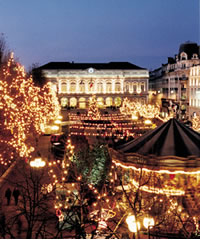 Long gone are the days of pits and coal mining. Ten years ago Saint-Etienne made an economic reconversion towards the new technologies (optics, biomedical, high-tech mechanics). Although the town has also undergone a cosmetic transformation(restoration, sandblast cleaning, rehabilitation and conversion) it has lost nothing of its original charm, thanks largely to the talents of Catalan architect Ricardo Bofill. Retaining undiminished spirit of daring innovation, the town seems on the verge of becoming the design capital of the world. As an exceptional cultural centre with prestigious museums and a plethora of cafés, theatres, clubs and restaurants, Saint-Etienne is a genuine metropolis.
Long gone are the days of pits and coal mining. Ten years ago Saint-Etienne made an economic reconversion towards the new technologies (optics, biomedical, high-tech mechanics). Although the town has also undergone a cosmetic transformation(restoration, sandblast cleaning, rehabilitation and conversion) it has lost nothing of its original charm, thanks largely to the talents of Catalan architect Ricardo Bofill. Retaining undiminished spirit of daring innovation, the town seems on the verge of becoming the design capital of the world. As an exceptional cultural centre with prestigious museums and a plethora of cafés, theatres, clubs and restaurants, Saint-Etienne is a genuine metropolis.
About Saint-Étienne, a cultural metropolis at the door of wonderful natural park. The era of coal mining and metal working firmly belongs to Saint-Étienne's past. The city has clearly evolved towards an economy based on new technologies. However, the city hasn't forgotten his remarkable industrial history. It is the only city in France selected as historical city for the 19th century. Beyond the Art and Industry National Museum with its unique collection of elaborate weaponry, unusual bicycles and braided ribbons, a complete industrial heritage is there to be visited.
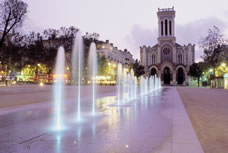
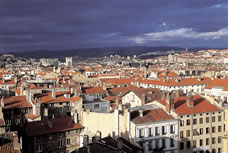
Saint-Étienne does not only have a rich industrial past but an exciting cultural present. Retaining undiminished spirit of daring innovation, the town seems on the verge of becoming the design capital of the world. The design heritage was the impetus behind the creation, in 1998, of the biennial international festival of design, which was an immediate success (150 000 visitors in 2002). With an internationally renowned Modern Art Gallery, Saint-Étienne offers an exceptional cultural center completed with a plethora of cafés, theatres, clubs and restaurants.
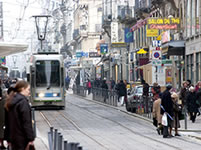
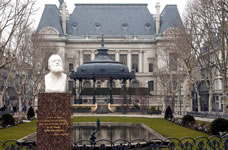
Situated at only 60 km from Lyon, Saint-Étienne is at the crossroads of the major French motorways making easily accessible cities like Geneva, Marseilles, Paris and region like the Alps, Drôme and Provence. The region of Saint-Étienne has much to offer. With a town center situated a stone's throw from the Pilat a regional Nature Park, the Forez mountains and the gorges of the River Loire, Saint-Étienne will give you a direct access to wonderful landscape with medieval villages and old stone castles scattered around. In the middle of the regional park, Saint-Victor water sport center will give you all the opportunities of sailing, water-skiing or canoeing.
A town buzzing with culture
SAINT-ETIENNE DOES NOT ONLY HAVE A RICH INDUSTRIAL PAST but an exciting cultural present. Better still it has managed to combine the two in a number of daring, ingenious and aesthetically challenging ways. A magnificent example of this is the Museum of Art and Industry with its unique collection of elaborate weaponry, unusual bicycles and braided ribbons.
 In 1987 the town opened its now internationally renowned Modernv Art Gallery (80000 visitors per year), which houses a collection of contemporary art, second only to the Georges Pompidou centre in Paris. With paintings, sculptures and visual installations, the museum is home to over 10000 works of art (Dubuffet, Soulages, Viallat, Klein, Warhol, Buren, etc.), which are constantly added to, thanks to the active acquisitions policy of the museum's directors. In addition to this ever-increasing collection is a unique 600-piece exhibition of French industrial design (Eames, Le Corbusier, Prouvé, Perriand and many others).
In 1987 the town opened its now internationally renowned Modernv Art Gallery (80000 visitors per year), which houses a collection of contemporary art, second only to the Georges Pompidou centre in Paris. With paintings, sculptures and visual installations, the museum is home to over 10000 works of art (Dubuffet, Soulages, Viallat, Klein, Warhol, Buren, etc.), which are constantly added to, thanks to the active acquisitions policy of the museum's directors. In addition to this ever-increasing collection is a unique 600-piece exhibition of French industrial design (Eames, Le Corbusier, Prouvé, Perriand and many others).
In fact, Saint-Etienne is home to French industrial design and bas been since its potential was recognised at the beginning of the 19th century. It is not by accident that Le Corbusier chose the Saint-Etienne region to construct the most complete example of his architectural genius. At Firminy (approximately 15 kilometres outside the town) stands a residence, a cultural centre, a sports stadium and a church all designed by this talented town planner.
This design heritage was the impetus behind the creation, in 1998, of the biennial international festival of design, which was an immediate success (150000 visitors in 2002). For ten days every other year, the town's exhibition park is filled with design objects from all over the globe (from the words of fashion, consumer goods and urban innovation) giving the visiting public a remarkable overview of the diversity of creation in the sector.
The success of the festival has prompted the town to create a permanent exhibition hall and creativity centre, the International Centre for Design (CID), now located in the centre of town on the derelict site of a now defunct arms manufacture.
The CID is not "just another design center" but a highly innovative concept bringing together science, technology and industry. Casting a wide net over artistic creation, innovation and technological transfer, education and forecasting of future product development, the centre is a genuine ideas laboratory, promoting a constant interaction between culture, research and economics. One particular project is a program of economic development the aim of which is to raise the profile of design in business and to increase interaction between local, national and international players. One thing is certain, design is one of the major influences behind modernity, driving innovation and defining tomorrow's lifestyle choices.